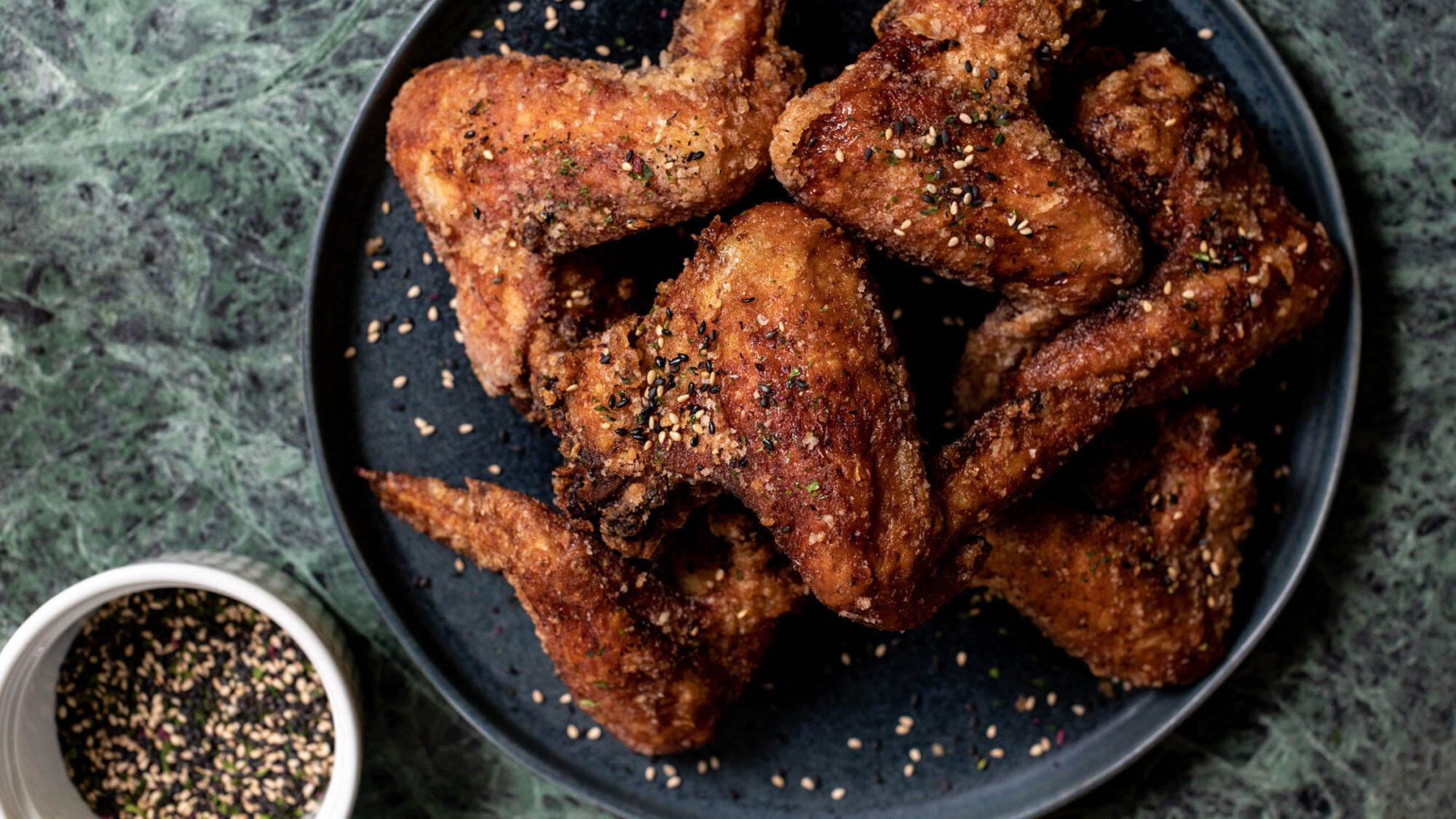
Frying at home opens up a whole world of katsu, karaage, schnitzel, and mochiko chicken.
When someone offers me fried chicken, I think of reaching into a cardboard bucket to nab a drumstick. But I also think of poking a short skewer into a piping hot bag of spicy popcorn chicken from a bubble tea shop in Los Angeles, and of dipping a craggy chicken tender into a pool of honey mustard. From cutlets to whole, deep-fried birds, fried chicken is less a strict formula and more a culinary flow state.
And while it may be tempting to chalk up a great bite of fried chicken to trade secrets or a kitchen stocked with a restaurant-grade deep fryer, most of the key components needed for any of these styles are already in your kitchen—and most certainly available at your grocery store. If you buy a whole chicken and break it down yourself, you can even hit on a few different styles of fried chicken in one week, cashing in on the joys of eating the chicken while it’s still piping hot, out fresh from the fryer. Plus, it’s much more fun to mix and match your dips. Imagine it with me: a lineup of hot sauce, allioli, matcha salt, and whatever else you’re feeling in the heat of the moment!
Chicken breast is excellent for katsu cutlets and for pounding thinner to make milanesa and schnitzel. Flattened chicken creates more surface area and results in shorter cooking times, which means you can get your sandwich on sooner. Wings and drumsticks not only provide a built-in handle, they also have more flavor in comparison to their boneless counterparts. To get around that, many boneless chicken recipes call for a quick marinade or adding ground spices during the dredging process. For karaage, skin-on, two-inch chicken thigh pieces are marinated in a lot of ginger, garlic, sesame oil, and sake; then they’re dipped first in flour and again in potato starch to lock in the juicy marinade and keep the outside crunchy.
Fried chicken is less a strict formula and more a culinary flow state.
Layering flavor in fried chicken is a balancing act. If you’ll be marinating or brining your chicken with pickle juice, buttermilk, or even sweet tea, timing is important. Brine for at least four hours and up to overnight, if you can. It is vital to shake off extra marinade and pat the chicken dry. Some recipes add a step to air-dry it on a rack in the fridge for extra crunch insurance.
Dredging can be as straightforward as coating the chicken in flour, egg, and whatever crunch you want—from panko to Cap’n Crunch or crumbled potato chips! But work quickly, making sure the oil is up to temperature, which can vary from 325 to 375 degrees Fahrenheit, depending on the recipe. However, if you marinated the chicken, flour is not enough to absorb all that excess liquid. Cornstarch and potato starch are especially handy for sponging up moisture and will still get crispy once fried. Give the chicken a light shake to get rid of any excess coating before dropping it into the oil. It’s sound advice for frying anything, really, to keep coating even and to keep the oil clear of floating bits.
The temperature and cleanliness of the oil is crucial to the frying process—something I learned five years ago while watching chefs at Tempura Matsui in New York leisurely run a sieve through the deep, circular vats of hot oil between batches. I like to mimic this while listening to relaxing ambient music, skimming and bringing the oil back up to full temperature. It’s totally okay to reuse canola, vegetable, safflower, and other high-temperature oils. You can clarify oil with cornstarch, or, if you can afford to wait until the next day, this gelatin technique is more thorough.
Travel Beyond the Bucket With These Fried Chicken Recipes:
- Caroline Fidanza’s schnitzel sandwich incorporates seasonings like cayenne pepper and mustard powder in the flour dredge.
- Sweet rice flour and cornstarch make for extra satisfying mochiko chicken.
- For a one-two umami punch, Catherine Yoo’s wings are dunked in a quick marinade and finished with furikake after frying.
- Whole fried chicken in the style of Max’s Restaurant chain, located throughout North America and Guam, is a veritable showstopper.
- Highly snackable Taiwanese popcorn chicken has crispy basil leaves in it, but you can take it in other directions with fried sage or curry leaves, too.
- Saltines step in for bread crumbs to make superthin milanesa de pollo on cemitas.
- Bring the izakaya experience to your kitchen with karaage. Don’t forget the ice-cold bīru!
- Korean fried chicken gets its signature crunch from potato starch and a double fry.
- Take things a step further, and stuff your wings with Vietnamese mung bean noodles.